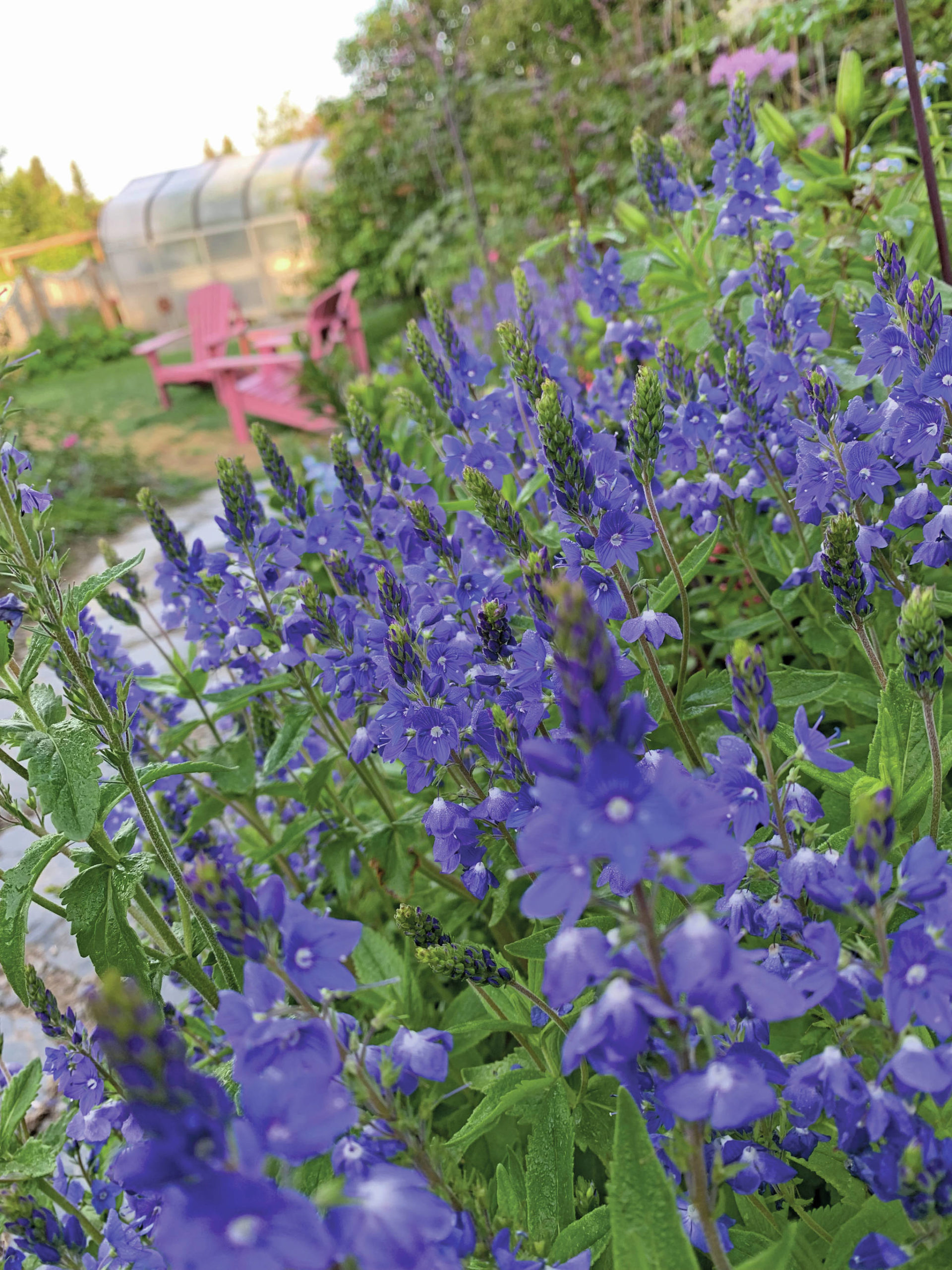The spinach has had a magnificent season, and now it’s in the freezer — before it bolted. The variety is Space Saver, and that, coupled with a very-cool to cold late spring that is ideal growing conditions for spinach, made for a bumper crop of huge, succulent leaves.
The purple cauliflower, Graffiti, has produced a huge flawless head, but so far just one. The others are hiding under their very tight leaves. The broccoli, Arcadia, is setting lovely heads, and the anticipation of actually eating one in the not too distant future is burning bright.
The salads have been varied and plentiful: lettuce, arugula, spinach, radish tops and sliced radish, pinches of basil and mint, cucumber, sorrel and new tender chard. Lovely. Toss a piece of grilled fresh fish on top and there you have it — summer on a plate.
But let’s pause here and think about how that salad came to be.
Compost.
This little vegetable plot has been cranking out produce for 22 years and compost has been the main component. There are neither bags nor boxes of this and that. You can read all the books out there and, apparently, still be baffled by how this works, how to put a compost together. I have written on this enough times to have vowed to never again broach the topic because it seems to conjure more questions than common sense.
So, here goes: We now have a trench system for our compost. John is in control of it. At one end is “finished” compost that was started about three years ago; at the other end is this year’s “fresh” compost, and it’s hot. In between are three years worth of composting material with the newest being happily devoured by the worms that thrive in our very own environment. We don’t add them, they just come to the call of decomposition.
There are kitchen scraps (no meat or dairy), grass clippings, weeds that have yet to go to seed, the trimmings of the spinach that I just processed for the freezer, the trimmings of the cauliflower that we are currently enjoying, some manure and a shovel full of regular dirt. The fresh material gets turned every now and then.
Got that? Nothing fancy, just what you are producing in your very own garden. It is the ultimate in frugality and simplicity, and humans have been creating compost forever. Don’t throw it away — toss it in the compost.
The greenhouse bins are filled with compost every fall in readiness for the April introduction of tomatoes, cucumbers and whatever else. Yes, they are growing in straight compost that we have made ourselves.
You can do this. Get started now.
The mock orange, of which there are three in this garden, is super slow to bloom in this challenging gardening season. I call this suspended animation, and really, all the perennials I panic purchased in an attempt to replace those that succumbed to a difficult winter, are all stalled. Poor things.
That said, the rain coupled with the recent warm temperatures have caused the existing perennials and shrubs to surge with new growth, creating an encouraging situation. The roses have responded with pure joy. Of the four different kinds here, all are in bloom and all are a delight.
There are four dwarf Korean lilacs with three in the West Garden. Those are blooming quite nicely, not with their usual exuberance but still enough to scent the air and offer color. But the one in the front of the house, the one that we see as we look out the living room window, the one that I was counting on to anchor the corner of that bed was looking grim. I told myself, when the reality of what winter did to this garden set in, that I wouldn’t cut anything down, or dig up any root masses. I would just leave well enough alone and see what happens. Well, the little lilac mustered up the energy to send out leaves and a few blooms. I’ve helped it along today by cutting out the truly dead branches. These branches will not miraculously resuscitate, although I was holding out hope. They are gone, and the shrub looks much more hopeful. I did the same thing with the hydrangea paniculata PeeGee. It has produced leaves and looks much more alive than it did two weeks ago.
I have lost the clematis tangutica, which I have always and forever thought of as indestructible. One of the clematis alpina is damaged, and I really want to tear it down from the trellis, but John has been the one to train it up onto the trellis and he doesn’t want to do it again. He has suggested that we keep the dead material and let the new growth (of which there is much) use that to climb on. I’ll have to go along with this theory as he seems quite adamant about this.
And new growth there is, everywhere. The meadow in front of us is lush. As we walk Jade the dog out the ski gate and through the meadow into the woods, on our way to the trail we notice a daily gain in growth of the natural environment. Resilience.
I am grateful for the patience I found somewhere to wait this out. There is hope.
Rosemary Fitzpatrick is a longtime Homer gardener and has been writing Kachemak Gardener since 1990.



